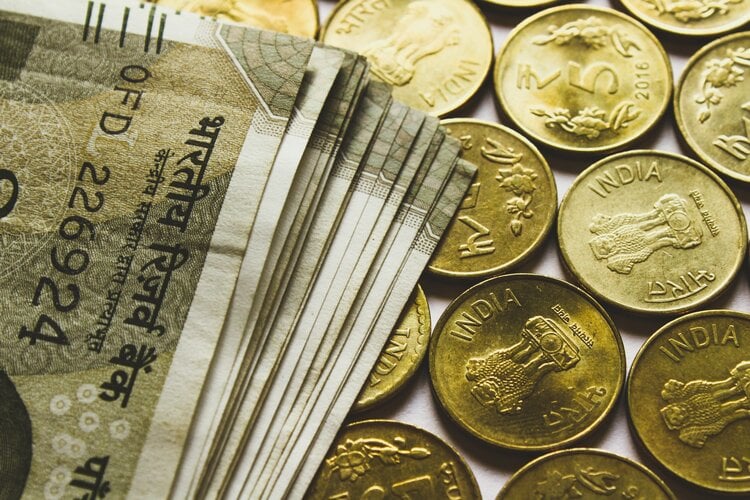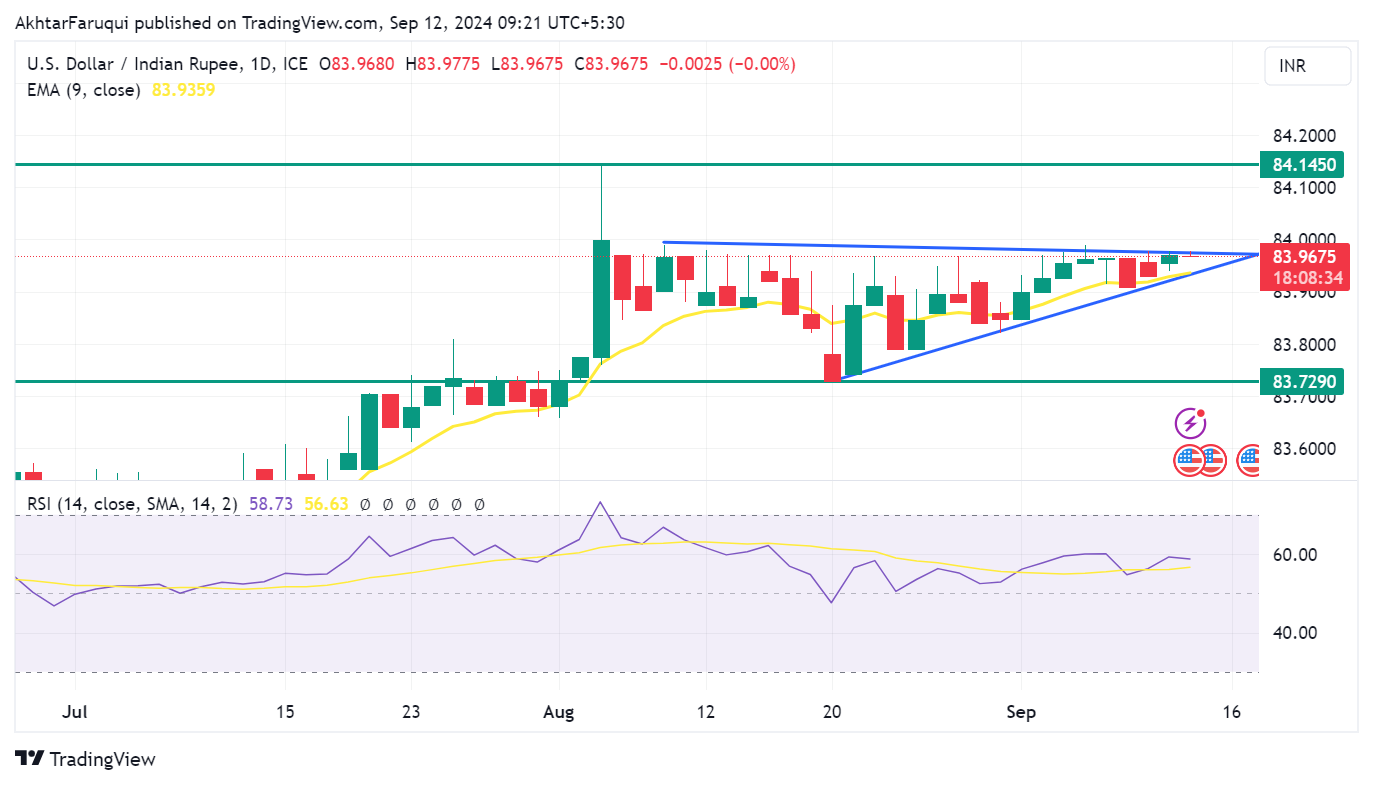Products You May Like
- The Indian Rupee may receive support from expected foreign inflows into domestic equities following US Consumer Price Index data.
- Traders expect RBI interventions to prevent the INR from weakening beyond the 84.00 level.
- The US inflation report has increased the odds of a 25-basis points rate cut by the Fed in September.
The USD/INR pair moves sideways on Thursday as traders speculate potential market interventions by the Reserve Bank of India (RBI) to prevent the Indian Rupee (INR) from weakening beyond the 84.00 level. Traders await Consumer Price Index and Industrial Output data from India scheduled to be released later in the day.
Additionally, subdued crude Oil prices provide support for the Indian Rupee against the US Dollar (USD). India, the world’s third-largest Oil importer, stands to benefit from lower import costs. Concerns over weakened Oil demand have offset the impact of Hurricane Francine on the United States (US) Oil production, the world’s largest crude producer.
The Indian Rupee may receive support from the expected rise in foreign inflows into domestic equities following August’s US Consumer Price Index (CPI) data. This US inflation report has heightened the likelihood that the Federal Reserve (Fed) will begin its easing cycle with a 25-basis points interest rate cut in September.
According to the CME FedWatch Tool, markets are fully anticipating at least a 25 basis point (bps) rate cut by the Federal Reserve at its September meeting. The likelihood of a 50 bps rate cut has sharply decreased to 15.0%, down from 44.0% a week ago.
Daily Digest Market Movers: Indian Rupee consolidates amid thin volatility
- India is considering relaxing investment rules for Chinese firms to stimulate its manufacturing sector. Additionally, the country has eased visa issuance for Chinese nationals to support local manufacturing. India’s trade deficit with China has nearly doubled since 2020, according to a Reuters’ report.
- The US Consumer Price Index dipped to 2.5% year-on-year in August, from the previous reading of 2.9%. The index has fallen short of the expected 2.6% reading. Meanwhile, headline CPI stood at 0.2% MoM. Core CPI ex Food & Energy, remained unchanged at 3.2% YoY. On a monthly basis, core CPI rose to 0.3% from the previous 0.2% reading.
- The first US presidential debate between former President Donald Trump and Democratic nominee Kamala Harris in Pennsylvania was won by Harris, according to a CNN poll. The debate began with a critical focus on the economy, inflation, and economic policies.
- On Tuesday, Reuters reported that six Indian bankers indicated that investors are urging the Indian federal government to increase the issuance of short-term and green bonds and to restart auctions for floating-rate bonds. These recommendations were discussed during a series of meetings about the government’s borrowing strategy for the latter half of the fiscal year.
- Chicago Fed President Austan Goolsbee remarked on Friday that Fed officials are starting to align with the broader market’s sentiment that a policy rate adjustment by the US central bank is imminent, according to CNBC. FXStreet’s FedTracker, which uses a custom AI model to evaluate Fed officials’ speeches on a dovish-to-hawkish scale from 0 to 10, rated Goolsbee’s comments as dovish, assigning them a score of 3.2.
- India’s FX Reserves reached a record high of $683.99 billion as of August 30, up from $681.69 billion previously. This surge is largely due to a substantial influx of foreign exchange into the Indian economy, spurred by robust economic growth and the long-anticipated inclusion of Indian assets in JPMorgan’s major emerging market debt index, which has enhanced foreign investment.
Technical Analysis: USD/INR remains below 84.00, tests upper boundary of the symmetrical triangle
The Indian Rupee remains slightly below 84.00 on Thursday. Analysis of the daily chart shows that the USD/INR pair is consolidating within a symmetrical triangle pattern, indicating reduced volatility and a phase of consolidation. However, the 14-day Relative Strength Index (RSI) remains above 50, suggesting that the bullish trend is still in play.
On the downside, the nine-day Exponential Moving Average (EMA) at 83.93 could serve as immediate support, aligning with the lower boundary of the symmetrical triangle near 83.90. A drop below this level might indicate a bearish shift, potentially applying downward pressure on the USD/INR pair and driving it toward its six-week low around 83.72.
On the resistance side, the USD/INR pair is consolidating, along with the upper boundary of the symmetrical triangle near the 84.00 level. A breakout above this point could propel the pair toward the all-time high of 84.14, recorded on August 5.

